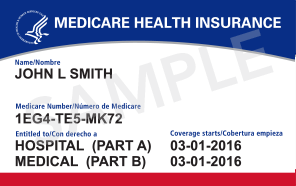NJ Medicaid Communication 18-06 signals huge increase in
lookback penalties
On August 10, 2018, the State of New Jersey Department of
Human Services, Division of Medical Assistance and Health Services (“DMAHS”)
issued Medicaid Communication 18-06 which will have a significant impact upon Medicaid
applicants who have made gifts within the five year period preceding their date
of application. The penalty divisor has
now been reduced from $423.95 per day to $343.85 per day.
When
a Medicaid application is submitted, the applicant is required to disclose
gratuitous transfers made during the 60 months (5 years) prior to the application. Should there be such transfers, (excluding
certain transfers which are exempted), they are aggregated and then divided by
the penalty rate (now $343.85\day) and the result is the number of days that
the applicant will be ineligible for Medicaid on account of the captured
transfers. An example: Assume Mr. Smith
is in a nursing home and applies for Medicaid on August 15, 2018, seeking a
September 1, 2018 effective date. On his application he discloses that in January
2015 he made transfers to his children in the aggregate amount of $200,000.00. Those gifts are caught in the 5 year lookback
and when divided by the new $343.85/day penalty rate produces a penalty of 581.65
days. Thus, he would be ineligible for Medicaid in the nursing home for 581.65
days (which is 1.5935 years or 19.122 months). During that penalty period Mr. Smith would
have to private pay the facility. The rate in effect from April 1, 2017 through
March 31, 2018 was $423.95 per day. Thus, had Mr. Smith applied for Medicaid, say
in March 2018, rather than on August 15, 2018, prior to the decrease in the
penalty rate, the penalty in connection with the captured $200,000.00 of gifts
would have only been 471.75 days (or 1.2924 years or 15.51 months). Thus, assuming
a facility cost of $10,000.00 per month, the decrease in the penalty divisor
has cost Mr. Smith an additional $36,120.00 (3.612 months x $10,000.00/month =
$36,120.00 in private pay).
To
be particularly noted, not only is the new penalty rate effective going forward
from August 1, 2018, but it is also retroactive to applications that had penalty
periods calculated between April 1, 2018 and August 1, 2018 – so that, “All
cases that have had penalty periods calculated between April 1, 2018 and August
1, 2018, must be recalculated if the penalty is reduced as a result of
the penalty divisor decrease.”
As a
result of the decrease in the penalty divisor we are seeing a huge increase in
the number of months that a Medicaid applicant would have to private pay on
account of gifts caught in the lookback.
Thus, this points to the greater need for Medicaid planning in advance
of the application in order to try to deal with transfers that would be caught
in the lookback or in connection with converting assets into an income stream. To be recalled, the penalty in connection with
transfers caught in the lookback does not begin to run until the applicant has
applied for, and would have been eligible for, Medicaid but for the gifts.
Please
do not hesitate to contact the office at (908) 359-8000 to discuss your family’s
long term care planning issues and the Medicaid application process.
Barry
M. Benson, Esq.
August
15, 2018
